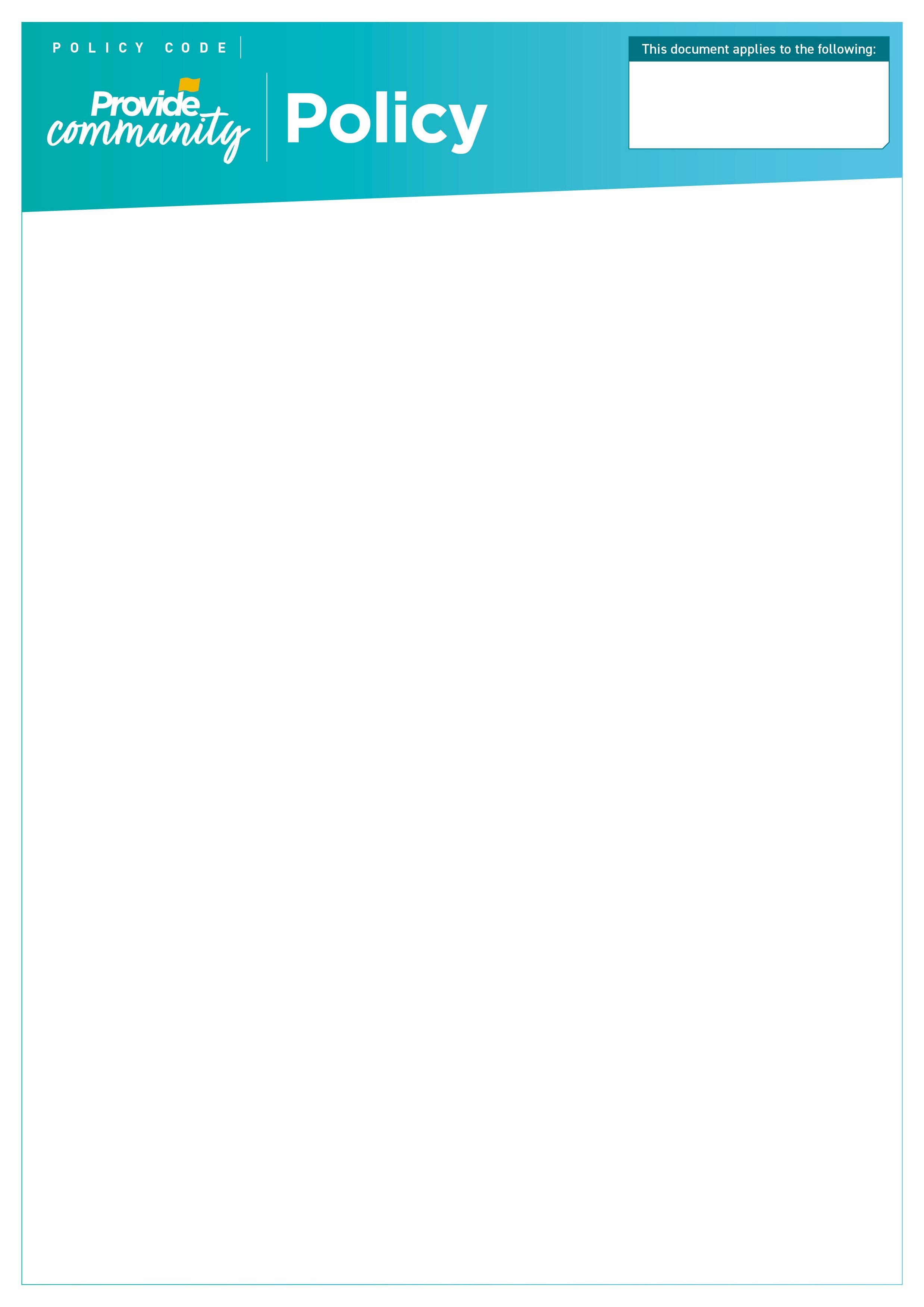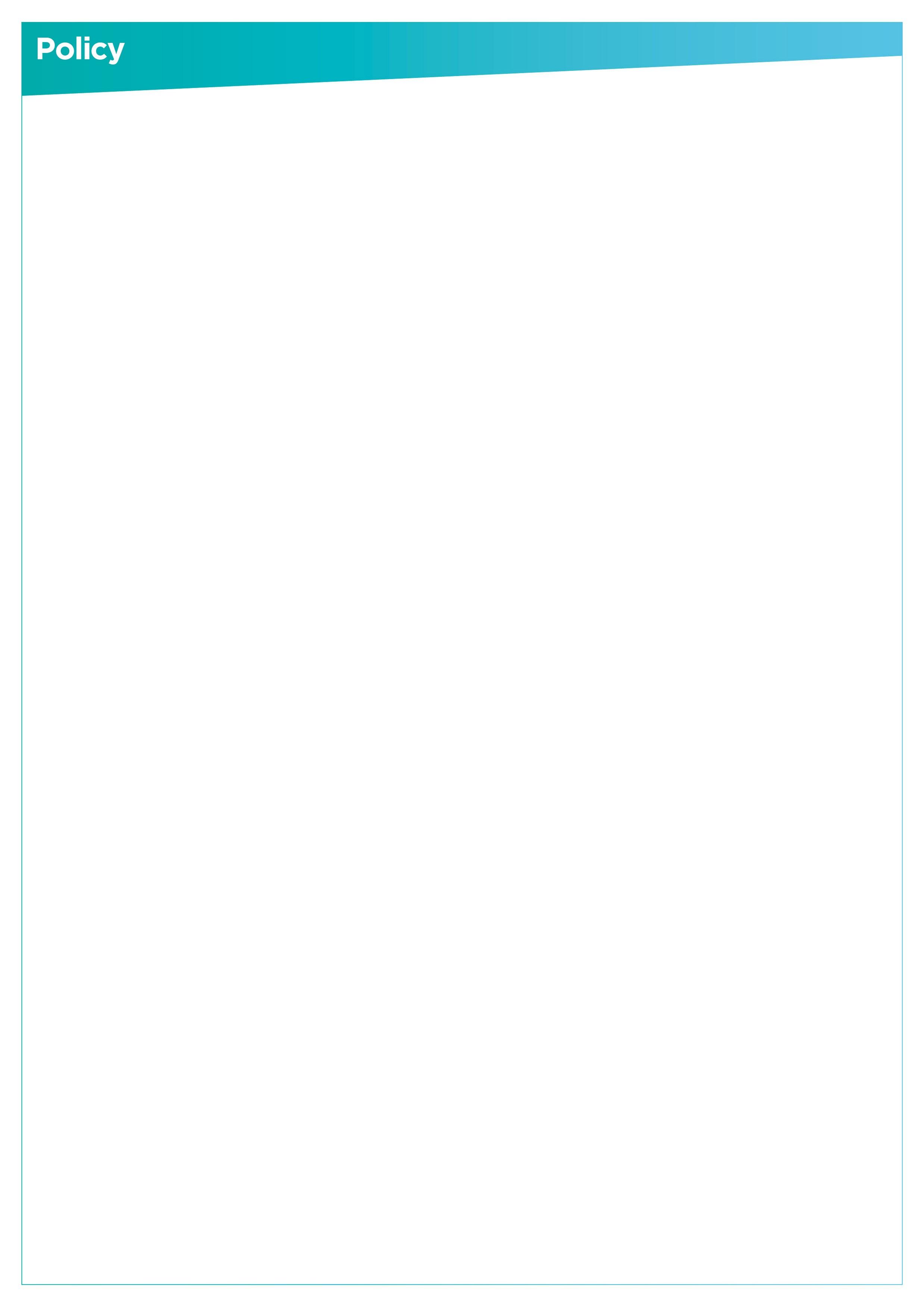Company Name One Company Name Two
Company Name Three
Company Name Four
Home Care – Standard Operating Procedure (SOP) Spillage of Bodily Fluids
Version: V[X]
Ratified by:
Date ratified: Click here to enter a date.
Job Title of author:
[job title & dept]
Reviewed by Committee or Expert Group [expert group, virtual panel or sub-committee]
Equality Impact Assessed by: [job title & dept]
Related procedural documents [show all related document]
Review date: [2 years from date of ratification]
It is the responsibility of users to ensure that you are using the most up to date document template – i.e. obtained via the intranet.
In developing/reviewing this policy Provide Community has had regard to the principles of the NHS Constitution.
Version Control Sheet
Version Date Author Status Comment
1. Introduction............................................................................................................
2. Purpose..................................................................................................................
3. Definitions..............................................................................................................
4. Duties.....................................................................................................................
5. Consultation and Communication...........................................................................
6. Monitoring..............................................................................................................
7. Heading 7...............................................................................................................
8. Heading 8 ..............................................................................................................
9. Heading 9
10. Heading 10
11. Heading 11
12. Heading 12
13. Heading 13
14. Heading 14
15. Heading 15
16. Heading 16
17. Heading 17
18. Heading 18
19. Heading 19
20. Heading 20
21. Heading 21
22. Heading 22
23. Heading 23
24. Heading 24
25. Heading 25
26. Heading 26
27. Heading 27
1. Introduction
Click here to enter text.
2. Purpose
To ensure that management of any spill of blood and other body fluids is safely undertaken to prevent transmission of infection to service users and sta. ff
3. Definitions
Click here to enter text.
4. Duties
Click here to enter text.
5. Consultation and Communication
Click here to enter text.
6. Monitoring
Click here to enter text.
7. Target Group
All Home Care sta dealing with spillages and who have received appropriate ff training in how to safely undertake this procedure.
8. Guidance
Sta should assume that all blood and body fluids may contain harmful micro- ff organisms and exposure to spillages could pose a potential risk of infection.
Staff should wear disposable gloves and a plastic apron whilst handling any spillage of body fluids. These can be discarded into the domestic waste bin.
If possible, cover all body fluid spillages with kitchen roll, toilet paper or other absorbable paper e.g. newspaper or even a clean incontinence pad at the earliest opportunity.
Absorb spillage into paper (as above) and place into domestic waste bin immediately.
Continue to absorb spillage as much as possible prior to wiping the surface with a solution of detergent (washing-up liquid) and warm water and a disposable cloth.
It is unlikely that home care staff will be exposed to infectious body fluids, but all spillages should be handled with care and cleaned up as soon as possible.
If there is a suspicion that spillages are infectious e.g. client feels unwell and vomits, then extra care should be taken to avoid contamination of hands or clothing.
In the clients’ own home, it is likely that a range of different cleaning/disinfectant products may be available that staff can use.
These are not essential for spills of urine or other body fluids e.g. faeces unless there is a suspicion of infection when they may help to provide reassurance to the client and/or reduce smells.
If the client has disinfectant products, and a decision is made to use them, products can only be used on a cleaned surface and only if the carer is familiar with the product, has read the label and is certain the product will not stain or bleach the surface.
Products that contain bleach e.g. Domestos, Milton etc. will bleach carpets and furniture and should only be used on hard surfaces e.g. lino, tiles etc.
Any product containing bleach should NOT be used undiluted – read manufacturers’ instructions carefully before use
EQUALITY IMPACT ASSESSMENT
TEMPLATE: Stage 1: ‘Screening’
Name of project/policy/strategy (hereafter referred to as “initiative”):
Provide a brief summary (bullet points) of the aims of the initiative and main activities:
Project/Policy Manager:
Date:
This stage establishes whether a proposed initiative will have an impact from an equality perspective on any particular group of people or community – i.e. on the grounds of race (incl. religion/faith), gender (incl. sexual orientation), age, disability, or whether it is “equality neutral” (i.e. have no effect either positive or negative). In the case of gender, consider whether men and women are affected differently.
Q1. Who will benefit from this initiative? Is there likely to be a positive impact on specific groups/communities (whether or not they are the intended beneficiaries), and if so, how? Or is it clear at this stage that it will be equality “neutral”? i.e. will have no particular effect on any group.
Q2. Is there likely to be an adverse impact on one or more minority/underrepresented or community groups as a result of this initiative? If so, who may be affected and why?
Or is it clear at this stage that it will be equality “neutral”?
Q3. Is the impact of the initiative – whether positive or negative - significant enough to warrant a more detailed assessment (Stage 2 – see guidance)? If not, will there be monitoring and review to assess the impact over a period time? Briefly (bullet points) give reasons for your answer and any steps you are taking to address particular issues, including any consultation with staff or external groups/agencies.
Guidelines: Things to consider
Equality impact assessments at Provide take account of relevant equality legislation and include age, (i.e. young and old,); race and ethnicity, gender, disability, religion and faith, and sexual orientation.
The initiative may have a positive, negative or neutral impact, i.e. have no particular effect on the group/community.
Where a negative (i.e. adverse) impact is identified, it may be appropriate to make a more detailed EIA (see Stage 2), or, as important, take early action to redress this – e.g. by abandoning or modifying the initiative. NB: If the initiative contravenes equality legislation, it must be abandoned or modified.
Where an initiative has a positive impact on groups/community relations, the EIA should make this explicit, to enable the outcomes to be monitored over its lifespan.
Where there is a positive impact on particular groups does this mean there could be an adverse impact on others, and if so can this be justified? - e.g. are there other existing or planned initiatives which redress this?
It may not be possible to provide detailed answers to some of these questions at the start of the initiative. The EIA may identify a lack of relevant data, and that data-gathering is a specific action required to inform the initiative as it develops, and also to form part of a continuing evaluation and review process.
It is envisaged that it will be relatively rare for full impact assessments to be carried out at Provide. Usually, where there are particular problems identified in the screening stage, it is envisaged that the approach will be amended at this stage, and/or setting up a monitoring/evaluation system to review a policy’s impact over time.
EQUALITY IMPACT ASSESSMENT TEMPLATE: Stage 2:
(To be used where the ‘screening phase has identified a substantial problem/concern)
This stage examines the initiative in more detail in order to obtain further information where required about its potential adverse or positive impact from an equality perspective. It will help inform whether any action needs to be taken and may form part of a continuing assessment framework as the initiative develops.
Q1. What data/information is there on the target beneficiary groups/communities? Are any of these groups under- or over-represented? Do they have access to the same resources? What are your sources of data and are there any gaps?
Q2. Is there a potential for this initiative to have a positive impact, such as tackling discrimination, promoting equality of opportunity and good community relations? If yes, how? Which are the main groups it will have an impact on?
Q3. Will the initiative have an adverse impact on any particular group or community/community relations? If yes, in what way? Will the impact be different for different groups – e.g. men and women?
Q4. Has there been consultation/is consultation planned with stakeholders/ beneficiaries/ staff who will be affected by the initiative? Summarise (bullet points) any important issues arising from the consultation.
Q5. Given your answers to the previous questions, how will your plans be revised to reduce/eliminate negative impact or enhance positive impact? Are there specific factors which need to be taken into account?
Q6. How will the initiative continue to be monitored and evaluated, including its impact on particular groups/ improving community relations? Where appropriate, identify any additional data that will be required.
Guidelines: Things to consider
An initiative may have a positive impact on some sectors of the community but leave others excluded or feeling they are excluded. Consideration should be given to how this can be tackled or minimised.
It is important to ensure that relevant groups/communities are identified who should be consulted. This may require taking positive action to engage with those groups who are traditionally less likely to respond to consultations, and could form a specific part of the initiative.
The consultation process should form a meaningful part of the initiative as it develops, and help inform any future action.
If the EIA shows an adverse impact, is this because it contravenes any equality legislation? If so, the initiative must be modified or abandoned. There may be another way to meet the objective(s) of the initiative.
Further information:
Useful Websites www.equalityhumanrights.com Website for new Equality agency www.employers-forum.co.uk – Employers forum on disability www.efa.org.uk – Employers forum on age
© MDA 2007








